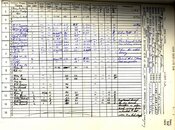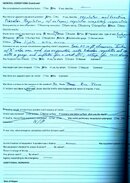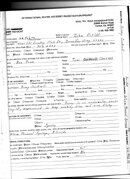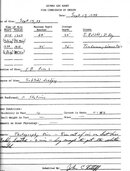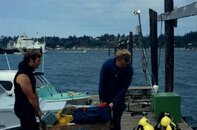However, if we discovered that 40% of the dive fatalities involved left-handers, we might think something is amiss. So we would first see if the % of left-handers in the dive population is the same as the % of left-handers in the general population. Assuming that we discovered that only 10% of the dive population was left-handed, we might draw an inference that there's some connection about being left-handed that increases your chances of becoming a fatality statistic.
Ken, I wished all posts were as well-thought and civilized as yours.
Let me briefly tell you that the two examples are not quite the same.
First, I agree with your left-handed example. With those numbers, sure there was something about left-handed that would ask for investigation. (Although it wouldn't be obvious the problem is really left-handedness. It could be. But it could also be, for example, that some other condition that causes, or comes with, or is caused by left-handedness would be the proximal responsible for the fatalities. Meaning that not only because left-handedness precedes and is correlated with fatality it is the direct cause.
Correlation does not imply causation)
In those cases, ignoring ambidexterity, people are either left-handed or right-handed. So we can quickly see that the 90% of right-handed people correspond to only 60% of the deaths. So no need to do much math, clearly there seems to be something directly or indirectly related to left-handedness that constitutes a risk factor.
Now...
If you will accept my 1% number, then the question becomes: How can something that happens 1% of the time in the general population account for 41% of the triggers in a fatality? I believe the inference you can draw is that there is some connection between running out of air and dying that indicates that running out of air is far more dangerous and less likely to be survivable than we teach.
Happy to be shown the folly of my ways (and I don't mean that as a macho/ego challenge, just saying feel free to point out what I'm missing).
Now... here is different. Because there could be any number of possible causes other than OOG, and because it doesn't sum up to 100%. Above you have left and right handed dives mapping into left and right handed deaths. Here you have OOG dives mapping into OOG deaths, cause B dives mapping to cause B gas, etc, then a lot, say 95% or more dives that simply have no death representation.
But forget this point, it's not the most important.
Here is the main point, which I have previously said:
If I accept your 1%, this means that 1% x 200million/10 = 200 thousand dives a year have OOG problems. Of those, 41% x 350/10 = 14 deaths. So, given your own numbers, the risk of dying of OOG causes
once you had an OOG problem is 14 / 200 thousand = only 0,007%. So, by your own numbers, OOG problems are manageable in 99,993% of the cases.
Wait a second, so maybe OOG is rarer, say it happens once every 100 thousand dives. Then only 7% of those die, and it's manageable in 93% of the cases. Now, if the frequency is 1 every million dives, then you can only save yourself 30% of the time. You see, without knowing the frequency with which OOG situations happen, we cannot access how fatal it is
once it happened. We can only calculate it based on total dives, that is, given that you dive, what is the chance of fatality due to OOG? Only 140 in 200 million, or 1 in 1.43 million.
In that sense, your fictitious handedness problem is the same. Say you have only 1000 fatalities for 200 million dives, roughly DAN numbers. So 40 are "due to left-handedness". And 10% of dives, so 20 million, are left-handed dives. So the fatality rate in left-handed dives is 40 in 20 million or 1 in 500 thousand. And the fatality rate in right-handed dives is 60 in 180 million or 1 in 3 million.
Left-handedness is 6x as dangerous as right-handedness but both are extremely safe.
I don't like saying this because it may foster recklessness, but if DAN numbers are right, then the kind of scuba diving most people do (likely shallow rec) is extremely safe.



